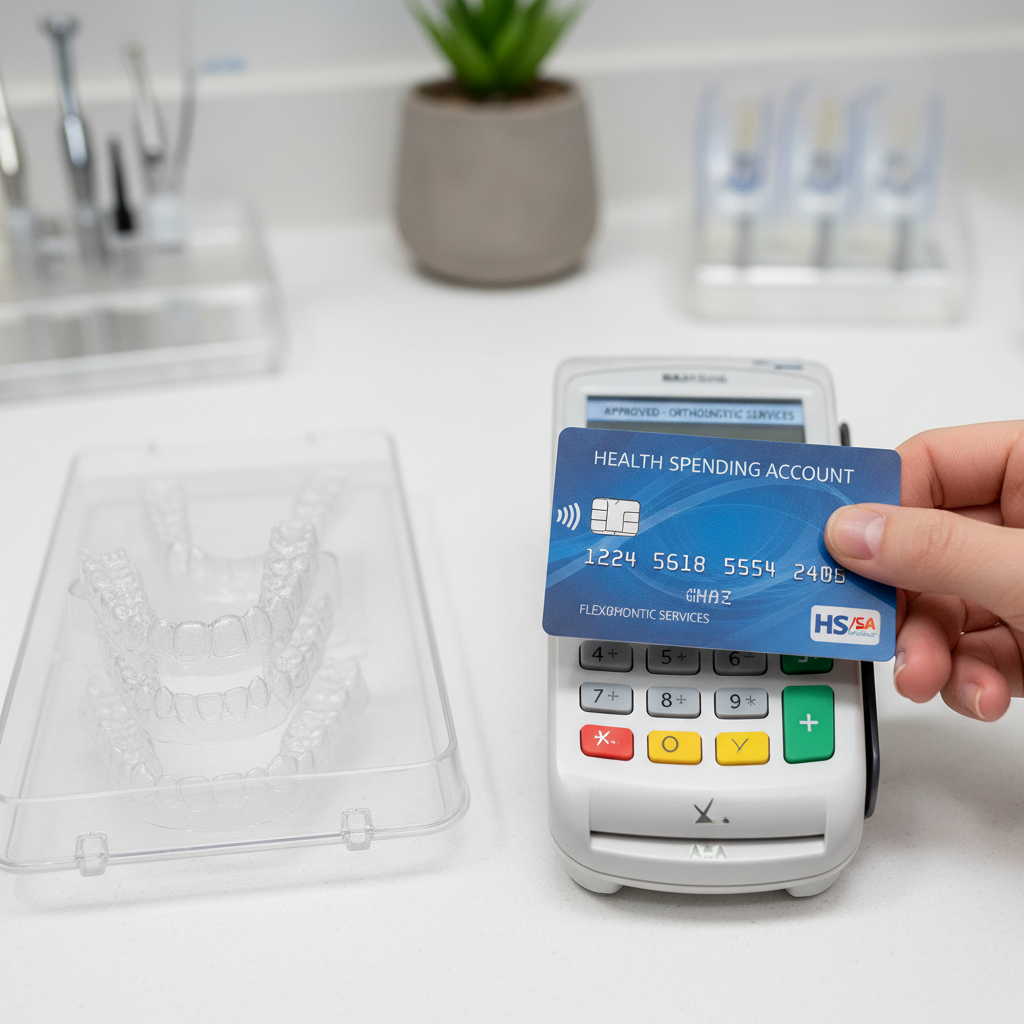
Struggling with the sticker shock of braces or clear aligners? You’re not alone. In 2025, orthodontic care is more advanced—and expensive—than ever. But what if you could cut your out-of-pocket costs in half or more, without falling for gimmicks or giving up expert care?

Stop Overpaying: How Insurance REALLY Works for Braces & Aligners in 2025
Millions are searching for savings—yet most miss out on hundreds or even thousands in benefits. Here’s what’s new and what you need to know right now:
- Dental insurance almost always covers kids’ braces—but adult coverage is spotty and varies widely by plan.
- Clear aligners for adults are sometimes covered, especially when prescribed and monitored by a licensed dentist or orthodontist[1][2][3][6].
- Coverage is typically 50% of treatment cost—but capped at a lifetime orthodontic maximum (usually $1,000–$3,000 per person)[4][8].
- Brand name matters: Insurers commonly reimburse for in-office options like Invisalign, OrthoFX, and Aligner32, but often not for direct-to-consumer kits (like SmileDirectClub)[2][3].
- Major insurers with adult orthodontic/aligner coverage in 2025: Delta Dental, MetLife, Cigna (e.g., Dental 1500), BlueCross, Humana (on select plans)—but always check your summary of benefits[3][5][6][7].
How Much Will Insurance Pay? (Realistic Scenarios)
| Plan | Annual Ortho Max | Est. % Covered |
|---|---|---|
| Delta Dental PPO | $2,000 lifetime | 50% |
| MetLife High PPO | $2,500 lifetime | 50% |
| Cigna Dental 1500 | $1,500 lifetime | 50% |
Example: If your Invisalign treatment costs $5,000 and your plan covers 50% up to $2,000, you pay $3,000 out of pocket.

FSA/HSA Double-Dip: Slash What You Owe by 20–35% Instantly
HSAs (Health Savings Accounts) and FSAs (Flexible Spending Accounts) are pre-tax accounts—so every $1,000 you spend is like $1,200–$1,350 in post-tax dollars, depending on your tax bracket[2]. Pro tip: Even if your insurance only covers part of your treatment, you can use your HSA/FSA for all unreimbursed costs—including monthly payments, down payments, and even initial consultations or retainers.

- Most major providers (Invisalign, Aligner32, OrthoFX, Byte) accept HSA/FSA cards for in-person and mail-order treatment.
- Act Fast: FSA money expires each year—if you don’t use it, you lose it.
- Tip: If you plan a start date in December/January, you may be able to use two years’ FSA limits for double the savings.

Financing That Works: Payment Plans & 0% Options in 2025
Don’t let the upfront cost freeze you out. In 2025, monthly payment plans are standard—sometimes with zero interest. Here’s how to tap the best deals without falling into a debt trap:

In-Office Payment Plans
- Many orthodontists offer 0% financing for 12–24 months—ask for a written quote and see if prepayment discounts are available.
- Example: Aligner32 offers in-office plans as low as $89/month for clear aligners (total cost: $1,150–$1,500)[1].
- Invisalign averages $125–$200/month for 24–36 months with third-party financing (CareCredit, LendingClub).
- Traditional braces usually cost $3,000–$7,000 total; monthly costs are $100–$250/month with common payment plans.
Third-Party Financing
- CareCredit and LendingClub are widely accepted for orthodontics—often 6–24 months 0% APR, then 9–18% interest.
- Some providers offer instant approval (even with average credit) and let you use FSA/HSA cards to pay down balances.
- Watch out: Deferred-interest offers can be risky—if not paid in time, you may owe back interest on the full amount borrowed.

How to Pay the Least—Step-by-Step Action Plan
- Demand a pre-treatment estimate from your provider and insurance company. Insist on a written breakdown of coverage, out-of-pocket costs, and your orthodontic max. Ask: Does my plan cover clear aligners, and is there an age restriction?
- Check if your FSA/HSA funds are available—and ask the office to process them before year-end for maximum savings.
- Shop treatment options: Don’t assume Invisalign is the only choice. Get pricing for OrthoFX, Aligner32, Byte, and traditional braces for comparison.
- Compare payment plans. Ask your orthodontist and third-party lenders for offers in writing. Don’t accept the first offer—negotiate for lower monthly payments, zero-interest periods, or extra discounts for upfront payment.
- Time your treatment strategically. If possible, start in late December to leverage two FSA years. Watch for back-to-school or end-of-year promo pricing (especially from Aligner32 and Byte).
Brand-by-Brand Cost Snapshot: 2025 Pricing Reality Check
| Product | Typical Cost (2025) | Insurance Eligible? |
|---|---|---|
| Aligner32 | $1,150–$2,000 | Yes[1] |
| Invisalign | $3,000–$6,500 | Yes[3][8] |
| OrthoFX | $2,950–$5,500 | Yes[2] |
| Byte (at-home) | $1,999–$2,499 | Rarely |
| Traditional Braces | $3,000–$7,000 | Yes[4] |
Expert Tips: How to Maximize Every Dollar
- Always get a written pre-authorization from your insurer. This locks in benefits and prevents surprise denials.
- Go in-office, not mail-order, for best insurance coverage. Most plans require a licensed dentist’s involvement for reimbursement[2][3].
- Don’t leave FSA/HSA money on the table. Plan your start date to use both accounts and maximize tax-free savings.
- Negotiate payment plans. Many offices will reduce down payments or extend 0% terms if you ask.
Ready to Take the Next Step?
Waiting costs money—prices rise annually, and unused FSA funds expire. Call your insurance company today, ask for your orthodontic benefits breakdown, and schedule consultations with at least two providers. Compare not just the sticker price, but real monthly costs after insurance, HSA/FSA, and payment plans. Secure your spot—many clinics book months in advance!


